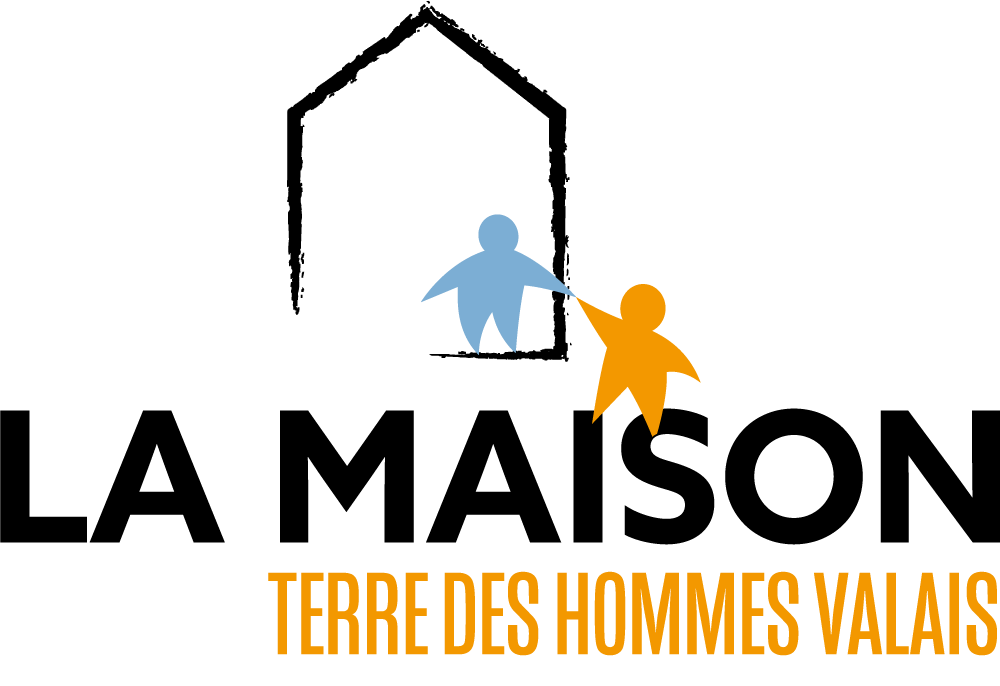Yosief, 13, a visual rebirth
written on the 30.09.2025The life of Yosief, a cheerful boy, was turned upside down at the age of two. His eyes began to show signs of discomfort. His vision gradually deteriorated, preventing him from living a normal life. The situation worsened over time, with his family unable to find an adequate solution. His condition became critical at the age of eleven. A long journey towards hope then began. First, with consultations in Ethiopia, a neighbouring country to his native Eritrea, then with a transfer to Switzerland thanks to the “Une chance, un cœur” foundation.
By Sanja Blazevic
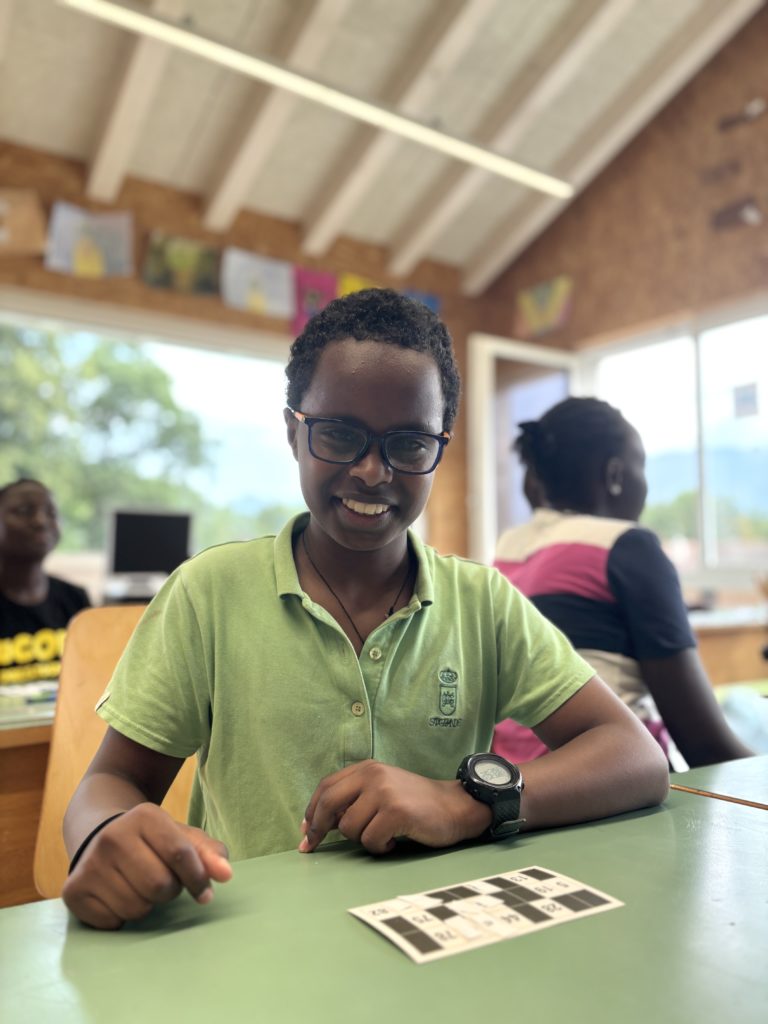
“Now everything is different. The operation has changed my life!”
Yosief, 13 years old
A battle against keratoconus
Yosief grew up in Asmara, the capital of Eritrea, alongside his sisters, his older brother and his mother. This cheerful, smiling boy was only two years old when his eyes began to itch. Seemingly harmless, these early symptoms would turn his life upside down. Over the years, his vision became increasingly blurred. Wearing glasses did not help. Contours gradually faded, distant shapes became blurred, then disappeared completely. At the age of eleven, Yosief found himself in an alarming situation.
In January 2024, his family took him to an ophthalmology centre in Ethiopia. The diagnosis finally came. His blurred vision and poor distance vision were actually caused by keratoconus, a disease characterised by progressive deformation of the cornea. During the consultation, the doctors discovered that Yosief’s vision was severely impaired. He could see five times less than normal with his right eye and ten times less with his left.
It was at this time that the young boy was spotted by the “Une chance, un cœur” foundation, thanks to the intervention of one of his relatives. Created and chaired by Prof. Jean-Jacques Goy, a renowned cardiologist, this Swiss foundation offers surgical care to children suffering from serious and diverse illnesses. “Bringing Yosief here was a considerable challenge. Due to the political situation in Eritrea, the embassy initially refused his visa application. I had to hire a solicitor to argue Yosief’s medical emergency before a court. This ultimately enabled us to obtain the necessary residence permit”, explains Professor Goy.
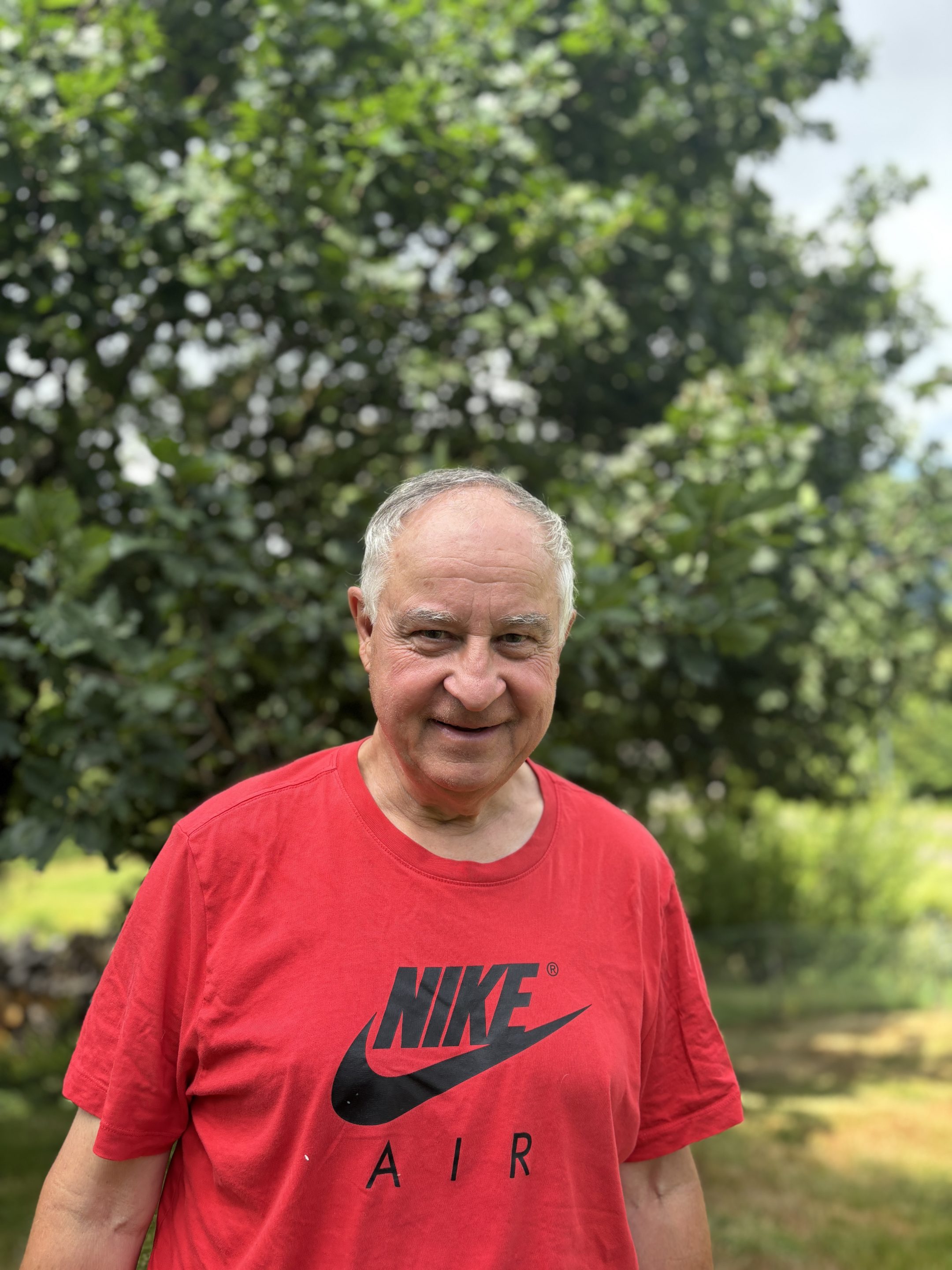
The perspective of our partner, “Une chance, un cœur”
Interview with Prof. Jean-Jacques Goy, cardiology specialist, President of the “Une chance, un cœur” foundation
Your foundation provides surgical care for young patients suffering from heart disease, as well as other serious illnesses. What does La Maison de Terre des hommes Valais mean to you in terms of supporting the sick children in its care?
Since we established a partnership with La Maison, it has been a turning point for our work. The collaboration is going perfectly. We transfer the children with complete confidence, knowing that they are being cared for with great kindness and humanity. The staff are wonderful with them, always listening and showing remarkable attention.
Our foundation operates without any employees, thanks solely to the commitment of dedicated volunteers, which complicates our work. At the same time, we also have to raise funds to bring the children to Switzerland and pay for their medical expenses. If we also had to take care of the children’s accommodation, our mission would be impossible. Without the partnership with La Maison, our foundation would be forced to stop these vital transfers for children in medical distress.
What are your dreams for the future of the children cared for through this partnership?
My dearest wish is that children will no longer need to come to Switzerland for treatment. In short, that they can be operated on directly in their country of origin.
Why is it crucial that donors support this chain of solidarity?
Money is the lifeblood of any endeavour, as the popular saying goes. We need financial resources to provide care for these sick children and give them a chance in life. As long as children need to come to Switzerland, we will depend on the generous support of many donors and partners. Of course, we remain hopeful that one day our intervention will no longer be necessary to save lives.
“I had to hire a lawyer to argue Yosief’s medical emergency case in court.”
Prof. Jean-Jacques Goy, President of the “Une chance, un cœur” foundation
The operation that changed everything
Despite the urgency, the administrative procedures to transfer Yosief to Switzerland took a long time. Faced with this situation, the Ethiopian medical team decided to react. They performed a cornea transplant on the left eye, which was the most severely affected, but did not have a graft for the right eye. After months of uncertainty regarding his visa, Yosief crossed the threshold of La Maison in April 2025. He was treated on a voluntary basis by Professor François Majo, Medical Director of the Centre Ophtalmologique de la Gare in Lausanne. The operation on his right eye was scheduled for early May at the Clinique Bois-Cerf, renowned for its state-of-the-art ophthalmology centre. “Among other partners, the ‘Une chance, un cœur’ foundation works with this clinic on the basis of a preferential flat rate for operations”, explains Prof. Goy.
A few weeks after the transplant, Yosief regained high-quality vision in his right eye. Distant shapes finally took on sharper outlines, and he discovered the world in a new light. Prof. Majo emphasises the need for extended specialised post-operation support, as follow-up can be tricky for an ophthalmologist with conventional training. Regarding the left eye, he added: “Among the complications observed during the initial treatment, the cornea transplanted in Ethiopia was off-centre. This greatly increased the risk of rejection. We therefore had to perform further surgery at the end of the summer.”
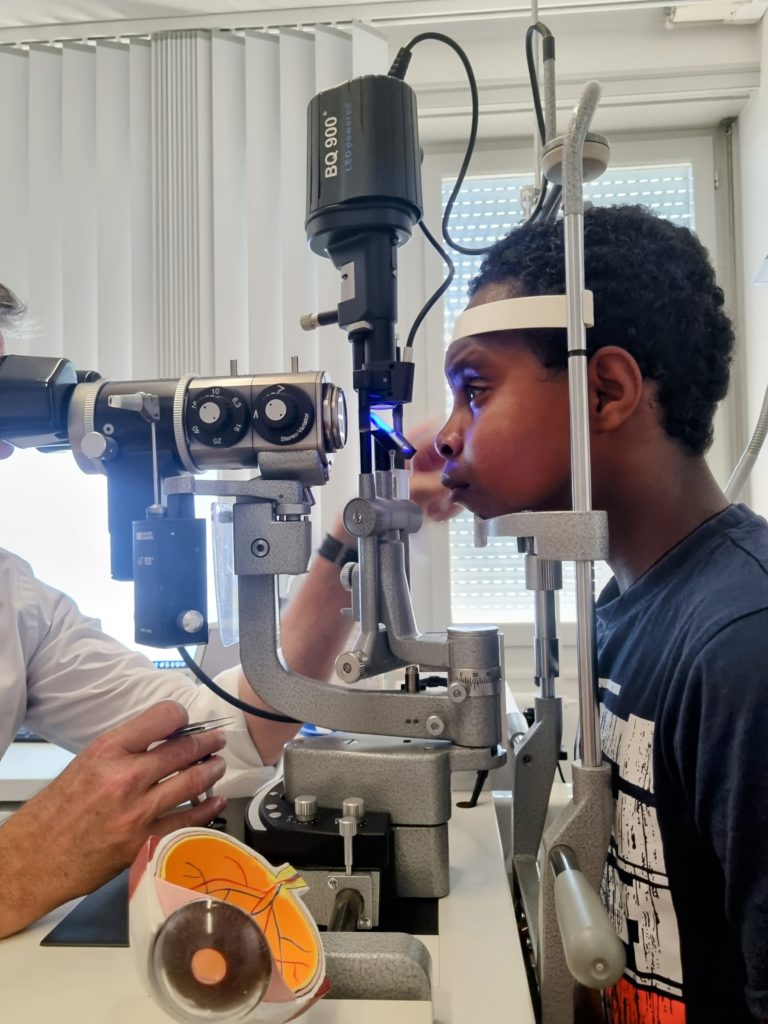
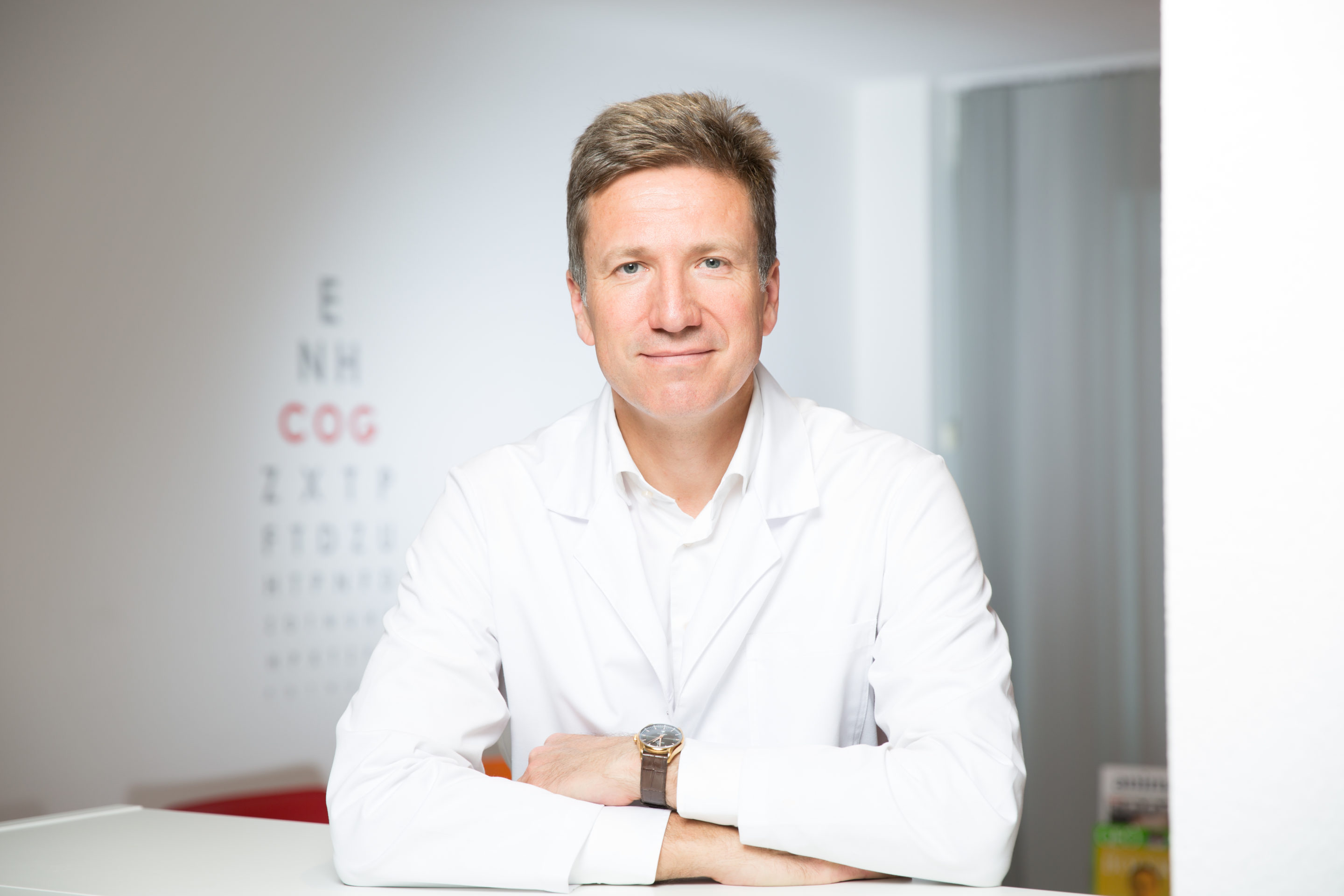
The “butterfly effect” of medical solidarity
Interview with Professor François Majo, Doctor of Medicine and Science, Specialist in ophthalmology and ophthalmic surgery, Medical Director of the Centre Ophtalmologique de la Gare in Lausanne, Lecturer at the University of Lausanne
How did Yosief contract keratoconus?
Rubbing the eyes is the main factor causing keratoconus. In early childhood, Yosief did not rub his eyes for “fun”, but because he felt persistent discomfort. This discomfort can be explained by the presence of inflammatory tears that irritate the surface of the eye. Repeated rubbing deforms the cornea and causes astigmatism. This can initially be corrected with glasses, and later only with special contact lenses. If the deformation continues to progress, only a cornea transplant can improve vision.
What would Yosief’s future have been without his transfer to Switzerland for surgery?
With his very poor vision, Yosief would have been limited in his choice of education and employment, as well as in his independence. When he arrived in Switzerland, his distance vision was already very poor: 4% in his right eye and 32% in his left. Over time, his vision in his left eye could also have deteriorated, as the transplant performed in Ethiopia carried a high risk of rejection. He could therefore have become visually impaired.
What is the recovery process after the operation?
Anti-rejection treatment must be administered locally for 18 to 24 months. During this period, there are various risks: rejection of the transplant, which is rare in the first year, increased intraocular pressure in the operated eye and oedema of the macula or central part of the retina. To monitor these potential complications, monthly follow-up is necessary for at least one year.
In your opinion, how does La Maison de Terre des hommes Valais play a crucial role in supporting children after surgery?
The surgical procedure accounts for 50%, or even less, of the success of the treatment. Afterwards, support from a team specialising in corneal transplants is crucial. Your organisation plays a decisive role in welcoming children to Massongex for at least six months to enable this initial follow-up.
In other words, performing a cornea transplant and leaving the patient with an 18-month post-operative treatment protocol without specialist follow-up would, in many cases, lead to the loss of the graft and the destruction of everyone’s efforts.
You volunteer to treat children at La Maison who have eye conditions. What motivates you to give your time and expertise?
My motivation is not based on direct feedback from the children. I believe in the “butterfly effect”. What I did for Yosief, he may do for someone else, and so on. I also hope that this approach will inspire others.
As I have a busy clinical and surgical practice, treating two or three patients a year free of charge ultimately fits in with my activities overall. One comment, however: poverty also exists in Switzerland, and this should not be forgotten.
“I believe in the ‘butterfly effect’. What I did for Yosief, he may do for someone else, and so on.”
Prof. François Majo, Medical Director of the Centre Ophtalmologique de la Gare in Lausanne
Sight, a treasure rediscovered
“At La Maison, we rarely see children with eye disorders. Over the past five years, we have had a total of seven cases, including Yosief”, explains Sarah Blin, one of the nurses at La Maison. “Post-operative follow-up requires the same vigilance as for all other conditions. Yosief receives daily treatment at the infirmary. He is given antibiotic drops, eye cleaning solutions and artificial tears to maintain good hydration.”
Since his arrival, the young boy has integrated perfectly into life at the institution. He participates in group activities, attends La Maison’s school and is making friends. On 28th June, he celebrated his thirteenth birthday alongside his classmates, surrounded by the kindness of the educational staff.
“Before, everything was blurry. Before, it was difficult to write. I had to lean over, my face pressed against the page, to see anything. I had to stop going to school several months ago to get treatment. Now, everything is different. The operation has changed my life!”
With a beaming face and a gentle gaze, Yosief confides in Azeb, an employee at La Maison, in his native language. He recounts the joy of this visual rebirth and the wonder he feels when looking at the world around him. “Here at La Maison, I was finally able to go back to school. But what I like most are the outings we go on. I’m discovering landscapes that are as magnificent as they are unique.”
For Yosief, sight is a priceless treasure that he was lucky enough to regain at the age of thirteen.
Yosief’s story illustrates the power of international solidarity and the importance of access to specialised care in radically transforming a destiny. Every gesture, every act of support helps to offer a future to the children welcomed at La Maison.
